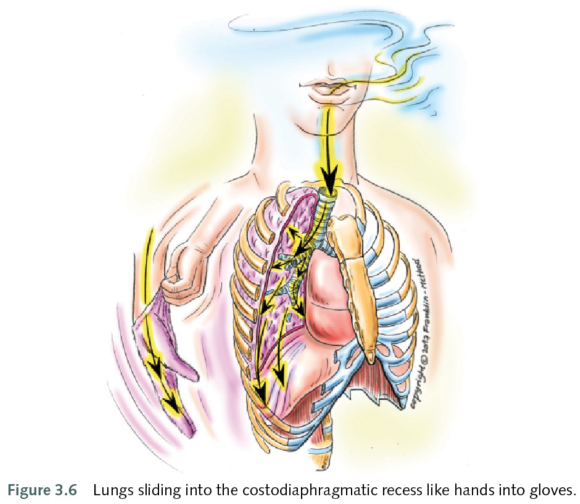Visualize lung movement to improve your breathing
This is an excerpt from Breathing for Peak Performance by Eric Franklin.
Costodiaphragmatic Recess
Visualizing how and where the lungs move when you inhale helps improve your breathing. The lungs expand outward during inhalation, but they also slide into available space between folded layers of parietal pleura. One of the largest of these layers lies between the lowest ribs and the back of the diaphragm at the junction of the costal and diaphragmatic pleura. This area is called the costodiaphragmatic recess.
- In a comfortable upright sitting or standing position, place your hands on the back and bottom of the rib cage, and visualize the area between the ribs and the diaphragm.
- As you inhale, imagine the lungs sliding into this area. They are opening the space between two folds of parietal pleura—one covering the diaphragm, the other covering the inside of the rib cage.
- Compare the feeling to sliding your hands into a glove. As you exhale, the lungs slide out of this area and the costal and diaphragmatic pleura close.
- Inhale and exhale several times, and imagine the lungs sliding into the costodiaphragmatic recess (figure 3.6). Use the metaphor of sliding your hands into gloves to help you with embodying this anatomical function.

SHOP

Get the latest insights with regular newsletters, plus periodic product information and special insider offers.
JOIN NOW


